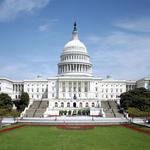Katie & David
Things To Do in Washington, DC
The White House
Smithsonian National Museum of Natural History
The National Museum of Natural History is a natural history museum administered by the Smithsonian Institution, located on the National Mall in Washington, D.C., United States. With free admission and open doors 364 days a year, it is the third most visited museum in the world, the most visited natural history museum in the world, and the most visited museum (of any type) in North America.
Smithsonian National Air and Space Museum
The National Air and Space Museum of the Smithsonian Institution, also called the NASM, is a museum in Washington, D.C.. It holds the largest collection of historic aircraft and spacecraft in the world.
National Archives Museum
The National Archives Building holds the original copies of the three main formative documents of the United States and its government: the Declaration of Independence, the Constitution, and the Bill of Rights. It also hosts the Articles of Confederation, the Louisiana Purchase Treaty, the Emancipation Proclamation, and collections of photography and other historically and culturally significant American artifacts.
National Museum of African American History and Culture
The National Museum of African American History and Culture (NMAAHC) is a Smithsonian Institution museum established in December 2003. The museum's building, collaboratively designed by Freelon Group, Adjaye Associates and Davis Brody Bond, is on the National Mall in Washington, D.C. It has close to 37,000 objects in its collection related to such subjects as community, family, the visual and performing arts, religion, civil rights, slavery, and segregation.
Washington Monument
The Washington Monument is an obelisk on the National Mall in Washington, D.C., built to commemorate George Washington, once commander-in-chief of the Continental Army and the first President of the United States.
Vietnam Veterans Memorial
World War II Memorial
Lincoln Memorial
Thomas Jefferson Memorial
National Gallery of Art
American & European art in two buildings.
Newseum
The Newseum is an interactive museum that promotes free expression and the First Amendment to the United States Constitution, while tracing the evolution of communication. The seven-level, 250,000-square-foot museum is located in Washington, D.C. and features 15 theaters and 15 galleries. *Be on the lookout for Katie's grandfather, David Brinkley, in some of the broadcast journalism exhibits*
